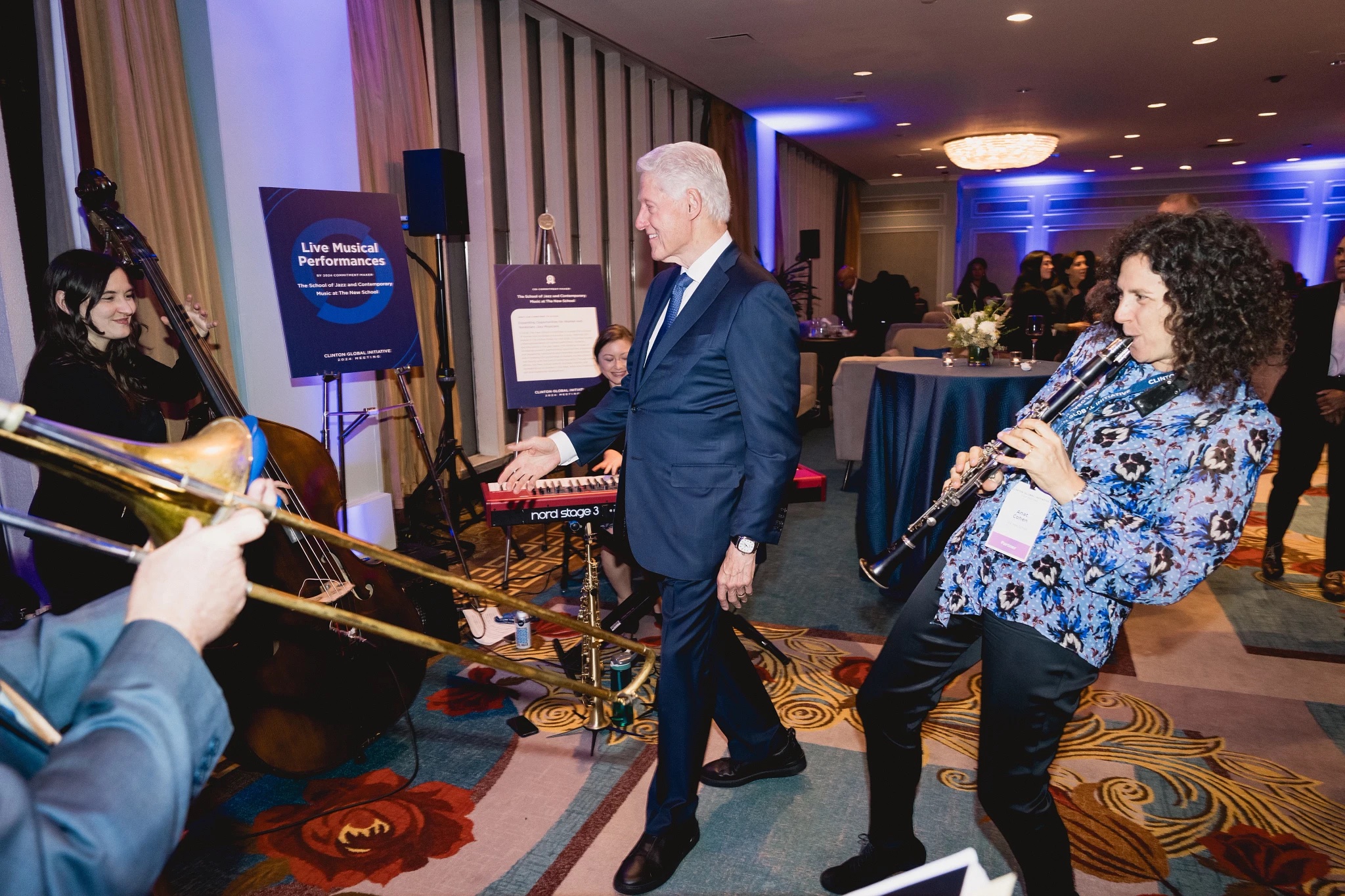
The School of Jazz and Contemporary Music Partners with the Clinton Global Initiative on Commitment to Gender Equity
Jane Ira Bloom, Mary Halvorson, and Anat Cohen are just some of the celebrated women faculty members who teach at the School of Jazz and Contemporary Music, which has one of the highest percentages of women educators in the country for a jazz school.
Over the years, a number of faculty members at the School of Jazz have led gender equity initiatives, meant to increase both the number of women studying and teaching at Jazz. A collective led by Fay Victor, Sara Serpa, Jen Shyu, and Linda May Han Oh helped implement the “We Have Voice” code of conduct, while a Jazz and Gender Series was started by Sarah Elizabeth Charles and Caroline Davis along with staff members Gina Izzo and Amanda Ekery, which is now This Is A Movement.
Now, the School of Jazz has created a commitment, in partnership with the Clinton Global Initiative, to increase the number of women faculty members to 50% of Jazz faculty by 2026, which will be overseen by Ekery and Allegra Levy.
“We have been noted as one of the top most inclusive schools as far as gender equity within jazz at the university level, but there is always room for improvement,” said Ekery and Levy. “We have extensive experience through our personal work, with the Women in Jazz Organization, This Is A Movement, and El Paso Jazz Girls. We thought making a commitment to action for gender equity within the New School jazz scene was the next place to start.”
Recently, the Clinton Global Initiative (CGI) held their annual meeting, where Jazz students and faculty performed for almost 25 events throughout the meeting. As part of the partnership, CGI asked Jazz to identify a commitment to action in one of the group’s core pillars, which led to the gender equity initiative.
“As part of the cohort of commitment makers, the Clinton Global Initiative provides access, connection and engagement, and promotion and amplification,” explains Ekery and Levy. “This has been realized through the CGI Annual Meetings and sharing our work within their networks.”
Together with Keller Coker, Dean of the School of Jazz, Ekery and Levy aim to fulfill the commitment through strategic recruitment, retaining more current faculty members, and making conscious choices to fill course openings with more diverse teachers.
“We are so happy to partner with the Clinton Global Initiative in the form of this Commitment,” says Coker. “A more inclusive, diverse faculty and course offerings is central to the mission of the School of Jazz and Contemporary Music and has been for at least a decade. We truly have the greatest faculty in the world, and this dedication to inclusiveness and gender equity is a primary reason why.”
It’s no secret that the jazz industry is dominated by men, but according to research done by Dr. Ariel Alexander, the top three reasons girls drop out of jazz education in K-12 settings are the masculine image of jazz, gender stereotypes of instruments, and dominating and competitive settings (The Routledge Companion for Women and Musical Leadership, 2024). Furthermore, within professional settings there continues to be a lack of gender equity in performance, composition, and education.
Lara Pellegrinelli, a faculty member at Eugene Lang, has conducted extensive research into gender equity in the jazz industry, and found that from 2007-2019, women-led/co-led jazz projects never ranged above 20% of NPR’s top 50 albums of the year, and in some years was 0%.
“There is clearly a lack of diversity in professional settings which stems from the lack of diversity in educational settings,” said Ekery and Levy. “Universities need to make sure that our teachers have the most diverse representation in order to inspire diverse voices. The New School currently boasts the most female/non-binary faculty at 32% in the United States, but we want to aim for true gender parity at 50/50. It is our role as a progressive institution to push towards more equitable practices for our students, faculty, and the larger jazz community.”